Hyundai i10 vs Mitsubishi Colt – Differences & prices compared
Compare performance, boot space, consumption and price in one view.
Find out now: which car is the better choice for you – Hyundai i10 or Mitsubishi Colt?
The Hyundai i10 (Hatchback) comes with a Petrol engine and Manuel or Automatic transmission. In comparison, the Mitsubishi Colt (Hatchback) features a Petrol or Full Hybrid engine with Manuel or Automatic transmission.
When it comes to boot capacity, the Hyundai i10 offers 252 L, while the Mitsubishi Colt provides 391 L – depending on how much space you need. If you’re looking for more power, decide whether the 90 HP of the Hyundai i10 or the 143 HP of the Mitsubishi Colt suits your needs better.
In terms of consumption, the values are 4.90 L per 100 km for the Hyundai i10, and 4.20 L for the Mitsubishi Colt.
Price-wise, the Hyundai i10 starts at 14600 £, while the Mitsubishi Colt is available from 15400 £. Compare all the details and find out which model fits your lifestyle best!
In the competitive segment of compact hatchbacks, the Hyundai i10 impresses with its blend of style, practicality, and fuel efficiency, making it a strong contender for city driving. In contrast, the Mitsubishi Colt offers a unique design and a reputation for reliability, appealing to those who prioritize ruggedness alongside everyday usability. Ultimately, both vehicles cater to distinct preferences, with the i10 showcasing modern features and the Colt standing out for its solid performance.
Hyundai i10
The Hyundai i10 impresses with its compact design, making it an ideal choice for navigating through busy urban environments. Its interior is surprisingly spacious, offering drivers and passengers comfort beyond what one might expect from a city car. The model combines efficiency and practicality, making it an attractive option for those seeking both economy and functionality in their daily commute.
details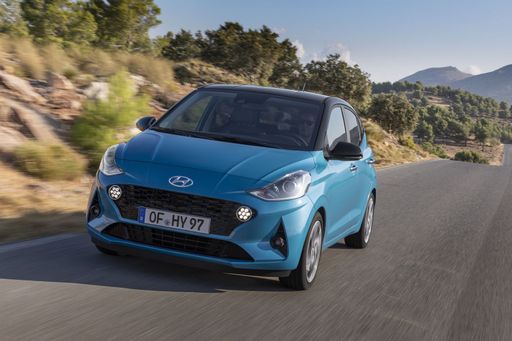 @ hyundai.news
@ hyundai.news
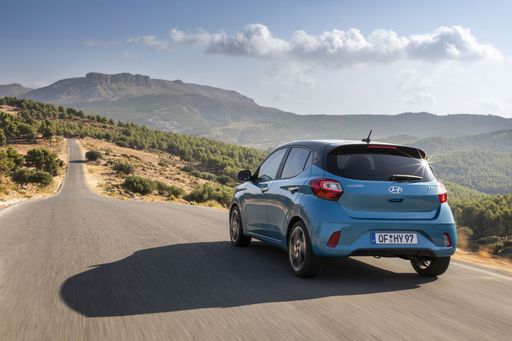 @ hyundai.news
@ hyundai.news
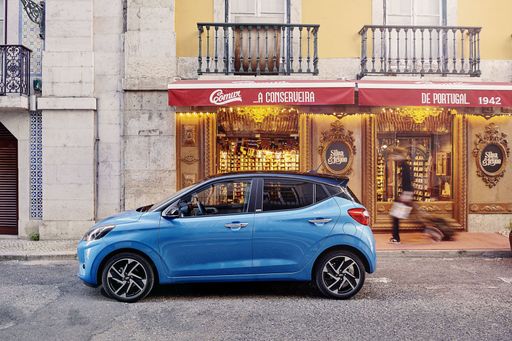 @ hyundai.news
@ hyundai.news
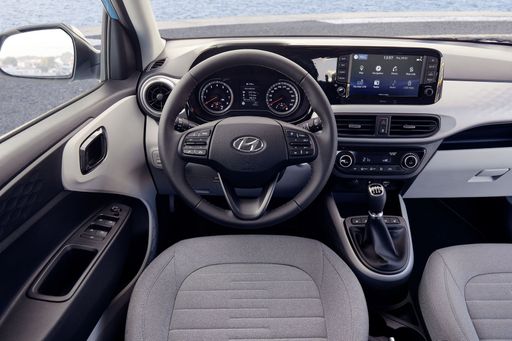 @ hyundai.news
@ hyundai.news
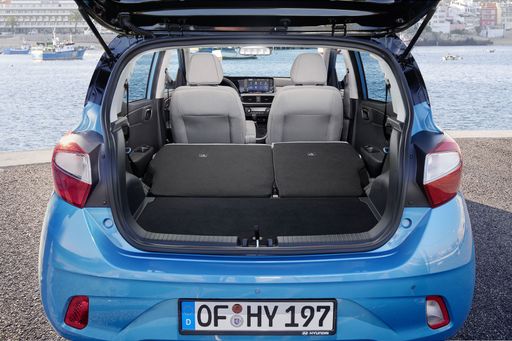 @ hyundai.news
@ hyundai.news
Mitsubishi Colt
The Mitsubishi Colt is a compact hatchback that combines practicality with a sleek design, making it an appealing choice for city drivers. Its efficient engine offers a balance of performance and fuel economy, which is ideal for everyday commuting. Inside, the Colt provides a comfortable cabin with intuitive controls and ample boot space for its class.
detailsThe automotive landscape is increasingly dominated by small hatchbacks that deliver efficiency, performance, and a plethora of technological innovations. Today, we compare two impressive contenders in this segment: the Hyundai i10 and the Mitsubishi Colt. Each model brings unique characteristics and advancements, making them strong players in the city car market.
Design and Dimensions
The Hyundai i10 is a compact hatchback with a length of 3,670 mm and a width of 1,680 mm, ensuring it maintains a nimble profile ideal for urban driving. It offers a height of 1,480 mm, providing a spacious interior for its class. On the other hand, the Mitsubishi Colt stretches out to 4,053 mm in length, with a width of 1,798 mm and a height of 1,439 mm. This larger footprint translates into enhanced cabin space, notably with a trunk capacity of 391 liters compared to the i10's 252 liters.
Engine Options and Performance
In terms of performance, the Hyundai i10 offers a choice of petrol engines delivering power outputs ranging from 63 HP to 90 HP. The engines come paired with either a manual or an automated manual transmission, optimizing fuel consumption at around 4.9 to 5.4 L/100km depending on the variant. The i10’s acceleration from 0-100 km/h ranges from a modest 11.4 seconds to a more leisurely 18.4 seconds, while its top speed peaks at 175 km/h.
The Mitsubishi Colt diversifies its offerings further by introducing a full hybrid variant alongside standard petrol engines, delivering power outputs from 67 HP to an impressive 143 HP. The Colt also features both manual and automatic gearbox options. Fuel consumption is slightly higher, averaging between 4.2 to 5.4 L/100km, but the introduction of hybrid technology positions the Colt as a more environmentally friendly option, with CO2 emissions as low as 96 g/km. The Colt’s acceleration can achieve a remarkable 0-100 km/h in just 9.3 seconds, making it a spirited performer.
Interior and Technology
Inside, both vehicles aim to offer comfort and convenience, but with differing focuses. The Hyundai i10 accommodates up to five passengers comfortably and integrates a user-friendly infotainment system that includes Bluetooth and smartphone connectivity features. Innovations like advanced driver-assistance systems are also available, enhancing the overall driving experience.
Conversely, the Mitsubishi Colt, with its slightly larger dimensions, dedicates itself to a more spacious cabin with ergonomic seats. The Colt also embraces technology with a modern infotainment system, featuring seamless smartphone integration alongside advanced safety systems. Additionally, the Colt's hybrid model may appeal to tech-savvy consumers looking for greening options without sacrificing performance.
Safety Features
Safety is paramount in both the Hyundai i10 and Mitsubishi Colt. The i10 is equipped with multiple airbags and advanced braking assistance technologies designed to meet stringent safety standards. It boasts a CO2 efficiency class ranging from C to D, which reflects its eco-conscious design.
The Colt similarly offers a robust suite of safety features, ensuring occupant protection and stability. With a higher CO2 efficiency class rating of C and D, the Colt also shows a commitment to lowering its environmental impact, particularly with the hybrid model which significantly reduces emissions.
Conclusion: Which One to Choose?
Ultimately, the choice between the Hyundai i10 and Mitsubishi Colt will depend on personal preferences and driving needs. If you prioritize compactness, a solid performance from a petrol engine, and excellent maneuverability, the Hyundai i10 may serve you well. However, if spaciousness, hybrid technology, and a more robust engine line-up float your boat, the Mitsubishi Colt represents a compelling option.
Both vehicles bring disruption to the small hatchback segment, showcasing innovation and performance that cater to diverse market demands. The final decision rests with what features and attributes matter most to you as an enthusiastic driver in the city.

|
|
|
|
|
Costs and Consumption |
|
|---|---|
|
Price
14600 - 19000 £
|
Price
15400 - 24800 £
|
|
Consumption L/100km
4.9 - 5.5 L
|
Consumption L/100km
4.2 - 5.4 L
|
|
Consumption kWh/100km
-
|
Consumption kWh/100km
-
|
|
Electric Range
-
|
Electric Range
-
|
|
Battery Capacity
-
|
Battery Capacity
-
|
|
co2
110 - 124 g/km
|
co2
96 - 121 g/km
|
|
Fuel tank capacity
36 L
|
Fuel tank capacity
39 - 42 L
|
Dimensions and Body |
|
|---|---|
|
Body Type
Hatchback
|
Body Type
Hatchback
|
|
Seats
4 - 5
|
Seats
5
|
|
Doors
5
|
Doors
5
|
|
Curb weight
996 - 1099 kg
|
Curb weight
1131 - 1380 kg
|
|
Trunk capacity
252 L
|
Trunk capacity
301 - 391 L
|
|
Length
3670 - 3675 mm
|
Length
4053 mm
|
|
Width
1680 mm
|
Width
1798 mm
|
|
Height
1480 - 1483 mm
|
Height
1439 mm
|
|
Payload
344 - 423 kg
|
Payload
381 - 399 kg
|
Engine and Performance |
|
|---|---|
|
Engine Type
Petrol
|
Engine Type
Petrol, Full Hybrid
|
|
Transmission
Manuel, Automatic
|
Transmission
Manuel, Automatic
|
|
Transmission Detail
Manual Gearbox, Automated Manual
|
Transmission Detail
Manual Gearbox, Automatic Gearbox
|
|
Drive Type
Front-Wheel Drive
|
Drive Type
Front-Wheel Drive
|
|
Power HP
63 - 90 HP
|
Power HP
67 - 143 HP
|
|
Acceleration 0-100km/h
11.4 - 18.4 s
|
Acceleration 0-100km/h
9.3 - 17.1 s
|
|
Max Speed
143 - 175 km/h
|
Max Speed
160 - 174 km/h
|
|
Torque
93 - 172 Nm
|
Torque
95 - 160 Nm
|
|
Number of Cylinders
3 - 4
|
Number of Cylinders
3 - 4
|
|
Power kW
46 - 66 kW
|
Power kW
49 - 105 kW
|
|
Engine capacity
998 - 1197 cm3
|
Engine capacity
999 - 1598 cm3
|
General |
|
|---|---|
|
Model Year
2024
|
Model Year
2023 - 2025
|
|
CO2 Efficiency Class
C, D
|
CO2 Efficiency Class
D, C
|
|
Brand
Hyundai
|
Brand
Mitsubishi
|
Hyundai i10
Introduction to the Hyundai i10
The Hyundai i10 has consistently proven to be a dependable and stylish companion for urban driving. Known for its compact design and efficiency, this hatchback offers a perfect blend of modern aesthetics and practicality, making it a popular choice for city dwellers and small families alike.
Performance and Efficiency
The Hyundai i10 is available with both manual and automatic transmissions, catering to various driving preferences. Engine power ranges from 63 to 90 PS, providing a versatile driving experience for both novice and seasoned drivers. The fuel consumption varies between an impressive 4.9 to 5.4 litres per 100 kilometres, fitting for those looking to minimise fuel costs while also reducing their carbon footprint.
Engine and Transmission
Equipped with a choice of 1.0-litre or 1.2-litre engines, the i10 offers up to 172 Nm of torque, ensuring lively performance. The models feature front-wheel-drive configurations, allowing for smooth handling and reliable road performance. The car excels in city driving but is equally capable on longer journeys.
Interior and Comfort
Despite its compact size, the Hyundai i10 does not compromise on interior space and comfort. It accommodates four to five occupants comfortably, offering sufficient legroom and headroom. Its flexible seating arrangement and a 252-litre boot make it ideal for both quick trips and weekend getaways.
Safety and Technology
Safety remains a priority with Hyundai, and the i10 is no exception. It comes equipped with multiple airbags, stability control, and advanced braking systems. Technology-wise, the i10 features a user-friendly infotainment system with smartphone connectivity, ensuring a pleasant and connected drive.
Design and Style
The Hyundai i10’s design is both modern and sleek, making it stand out in the compact hatchback segment. With a length ranging from 3670 to 3675 mm, a width of 1680 mm, and a height of 1480 to 1483 mm, the i10 strikes a perfect balance between style and functionality.
Affordable Pricing and Value
The i10 is available in several trims including the Select, N Line, and Prime, among others, with prices ranging from €16,990 to €22,190. Considering its features and low running costs — with monthly expenses estimated between €694 to €793 — the Hyundai i10 offers substantial value for those seeking an economical yet stylish hatchback.
Conclusion
The Hyundai i10 combines efficiency, modern design, and practicality in a compact package. Whether you are seeking a reliable city car or an economical daily driver, the Hyundai i10 is a strong contender worth considering in the compact car market of 2024.
Mitsubishi Colt
The Return of the Mitsubishi Colt: A Compact Driving Experience Reimagined
The Mitsubishi Colt makes a striking return to the compact car segment, blending advanced technology with a renewed design philosophy. Originally celebrated for its durability and practicality, the Colt's latest model showcases Mitsubishi's commitment to integrating modern innovation with their classic design ethos. In this article, we delve into the technical details and innovations that define the new Mitsubishi Colt.
Innovative Powertrains and Efficiencies
The new Colt offers a diverse range of powertrains, emphasizing both performance and efficiency. With options ranging from traditional petrol engines to advanced hybrid systems, drivers can choose a configuration that best suits their driving needs. The full-hybrid system stands out, offering a power output of up to 143 PS while maintaining an impressive fuel economy of as low as 4.2 L/100 km. This combination of efficiency and power positions the Colt as a formidable rival in its class.
For drivers prioritising efficiency without compromising on responsiveness, the turbocharged petrol engines deliver up to 160 Nm of torque, ensuring a dynamic driving experience. The manual and automatic transmission options further allow for customizable driving experiences, catering to both purists and those who prefer convenience.
Smart Design and Versatility
The Mitsubishi Colt's design is both functional and stylish, reflecting its hatchback body style. With dimensions of 4053 mm in length and 1798 mm in width, the Colt strikes a balance between a compact footprint and spacious interior. This design facilitates ease of manoeuvring in urban settings while providing adequate space for passengers and luggage, with a boot capacity ranging from 301 to 391 litres.
Inside, the Colt is designed with a driver-centric focus, providing a range of technological amenities and options for comfort. From the 'Basic' to the 'Top' trim lines, each variant includes a thoughtful selection of standard and optional features, ensuring that drivers can choose the specific configuration that fits their lifestyle and needs best.
A Focus on Safety and Environmental Responsibility
Safety is a priority with the Mitsubishi Colt, reflected in its abundant safety features and robust build quality. Equipped with modern driver assistance systems, the Colt is designed to minimize risks and offer peace of mind during travel. The model's commitment to safety does not overshadow its ecological considerations, as demonstrated by its CO2 emissions rating ranging from 96 to 121 g/km.
The Colt further addresses environmental concerns with its hybrid models, which not only reduce emissions but also enhance fuel efficiency. These features contribute to the vehicle’s respectable CO2 efficiency classes, ranging from C to D.
The Verdict: Compact Excellence
The 2023-2024 Mitsubishi Colt marks an exciting chapter in the evolution of compact cars, offering a blend of efficiency, performance, and practicality. With a starting price of 17,990 € and reaching up to 28,990 €, the Colt provides excellent value for money in its segment. Its balance of technology and traditional driving experience makes it a versatile choice for a wide range of drivers.
In summary, the Mitsubishi Colt defines itself as a competitive and innovative option for those seeking reliable, efficient, and technologically savvy automotive solutions. Whether commuting in the city or cruising on the open road, the Colt is engineered to deliver a satisfying driving experience with an eye towards the future of sustainable mobility.
Which drive types are available for the Hyundai i10?
Available as Front-Wheel Drive.
The prices and data displayed are estimates based on German list prices and may vary by country. This information is not legally binding.
